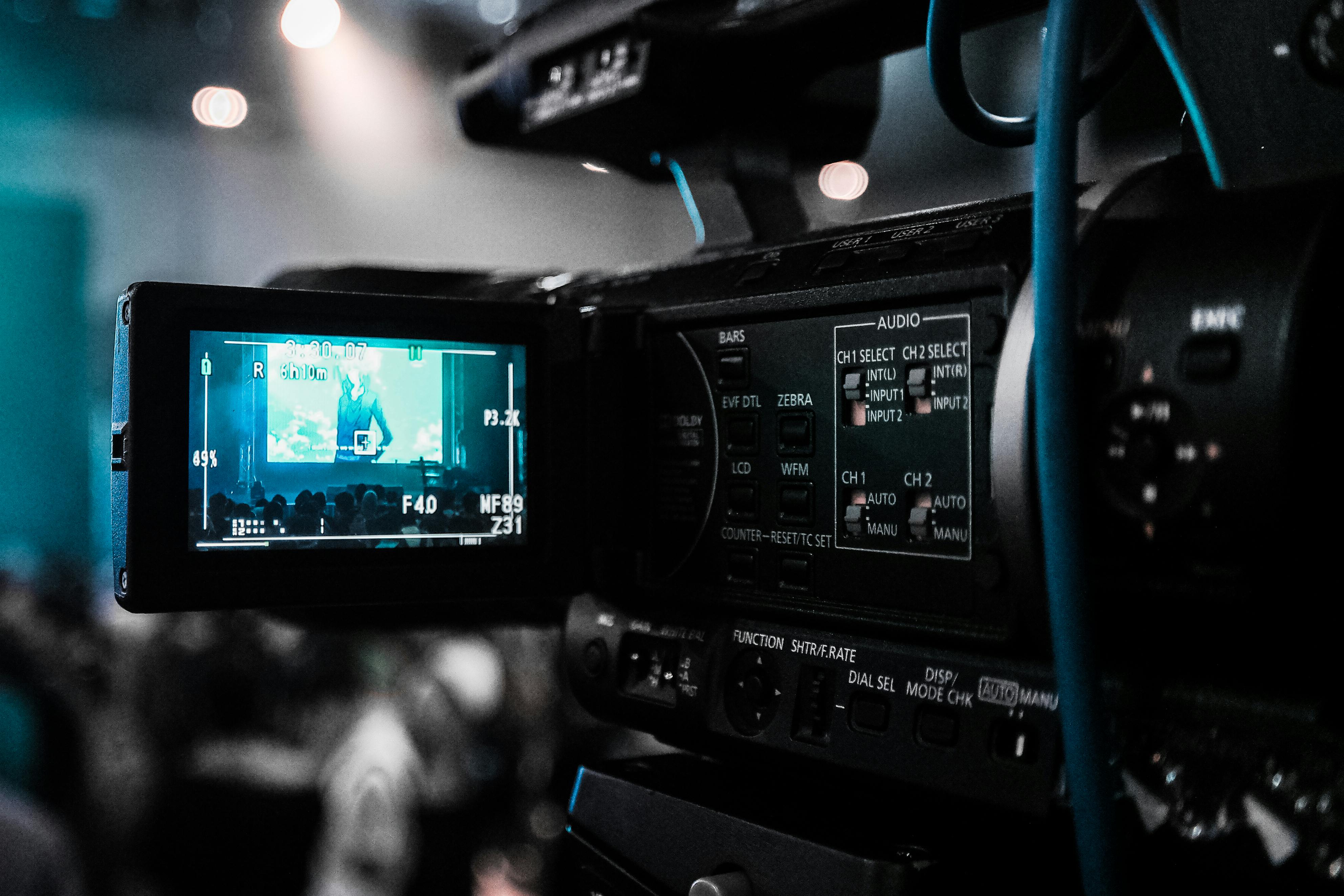If you’re looking to create compelling podcasts, mastering the art of interviewing is essential. Whether you’re just starting out or a seasoned podcaster, honing your interview techniques can make all the difference in captivating your audience. From asking thought-provoking questions to creating a comfortable atmosphere for your guests, there are many strategies to consider. But before you delve into the techniques, it’s important to have the right equipment. Microphones from reputable brands like Shure, Rode, and Audio-Technica, along with headphones from Sennheiser, Sony, or Beyerdynamic, can significantly enhance the audio quality of your podcast. Additionally, investing in quality audio interfaces, pop filters, boom arms/stands, shock mounts, and acoustic treatment can make a world of difference in creating a professional-sounding podcast. So, let’s explore some interview techniques that will help you produce captivating podcast content!
Preparation for the Interview
Before conducting an interview for your podcast, it’s essential to adequately prepare to ensure a successful and engaging conversation. This involves several key steps that will help you feel confident and ready to create compelling content.

Research the Guest
Start by conducting thorough research on your guest. Look for information about their background, expertise, and any notable achievements or experiences. This will not only demonstrate your professionalism but also help you tailor your questions to their specific knowledge and interests.
Outline the Interview
Having a clear outline of the interview structure will provide you with a roadmap to follow during the conversation. Consider the main topics you want to cover and in what order. This will help you maintain a logical flow and ensure that you don’t miss any important points.
Prepare Questions
Prepare a list of well-thought-out questions in advance. These should be open-ended and designed to elicit detailed responses from your guest. Consider the purpose of your interview and what you want your listeners to gain from it. Organize your questions in a way that creates a narrative and allows for a natural progression of the conversation.
Set the Tone
Consider the tone and atmosphere you want for your interview. Determine if you want it to be casual and conversational, or more formal and informative. Setting the right tone will help put your guest at ease and create a comfortable environment for an engaging conversation.
Creating a Comfortable Environment
To ensure a productive and relaxed interview, it’s crucial to create a comfortable environment for both you and your guest. This involves careful consideration of the location, equipment setup, audio quality, and establishing rapport.
Choose a Suitable Location
Select a location for the interview that is quiet and free from distractions. If you have a dedicated recording space, that would be ideal. If not, choose a location where you can minimize background noise and interruptions. Consider using sound-absorbing materials or creating a makeshift sound booth to improve audio quality.
Test and Set Up Equipment
Before starting the interview, make sure to test and set up all the necessary equipment. This includes microphones, headphones, audio interfaces, pop filters, boom arms/stands, shock mounts, and any other accessories. Familiarize yourself with the operation of each piece of equipment to ensure a smooth recording process.
Ensure Good Audio Quality
Audio quality is one of the most crucial aspects of a podcast interview. Invest in high-quality microphones, headphones, and recording software to ensure crystal-clear audio. Consider using audio interfaces to improve sound capture and minimize interference. Using professional-grade cables and accessories will further enhance the overall audio quality.
Establish Rapport with the Guest
Building rapport with your guest helps create a comfortable and relaxed atmosphere for the interview. Take the time to chat and connect with them before hitting the record button. Show genuine interest in their work and experiences. Engage in small talk to ease any tension and build a foundation of trust and mutual respect.
Opening the Interview
The opening of your interview sets the stage for the entire conversation. It’s your opportunity to introduce the guest, break the ice, state the purpose of the interview, and set expectations for both the guest and your listeners.
Introduce the Guest
Start the interview by introducing your guest to your audience. Provide a brief overview of their background, expertise, and any notable accomplishments. This introduction gives your listeners context and generates initial interest in the conversation.
Break the Ice
Breaking the ice is crucial to creating a relaxed and friendly atmosphere. Start with some light conversation or a casual question to help your guest feel comfortable. This will set the tone for the rest of the interview and encourage open and authentic responses.

State the Purpose of the Interview
Clearly communicate the purpose of the interview to your guest and listeners. Explain why you invited them to be a part of your podcast and what you hope to achieve through the conversation. This helps your guest understand the direction of the interview and allows your listeners to know what to expect.
Set Expectations
Outline the structure and duration of the interview to manage your guest’s expectations. Let them know how long the interview will last and what topics you plan to cover. This clarity ensures that both you and your guest are on the same page, allowing for a smooth and focused conversation.
Active Listening and Follow-up Questions
Active listening is a fundamental skill that allows you to engage fully with your guest and create a dynamic conversation. By actively listening, you can ask meaningful follow-up questions that delve deeper into the topic and encourage your guest to elaborate on their ideas.
Pay Attention and Stay Engaged
During the interview, focus your attention solely on your guest and what they are saying. Avoid distractions and make sure you’re fully present in the conversation. Active engagement through eye contact, nodding, and other non-verbal cues lets your guest know that you are fully invested in what they have to say.
Ask Open-ended Questions
Open-ended questions are an essential tool for encouraging your guest to provide detailed responses. These questions cannot be answered with a simple “yes” or “no” and require the guest to delve deeper into their thoughts and experiences. This type of questioning allows for a more meaningful and engaging conversation.
Seek Clarification
If your guest mentions something that you don’t fully understand, don’t hesitate to seek clarification. Ask follow-up questions to ensure that both you and your listeners grasp the concepts being discussed. This demonstrates your genuine interest and shows that you value your guest’s expertise.

Encourage the Guest to Elaborate
Encourage your guest to expand on their responses by using phrases like “Tell me more about that” or “Can you provide an example?” This prompts them to provide additional details, anecdotes, or insights. Encouraging elaboration helps create a rich and informative conversation that captivates your audience.
Managing Time and Flow
Effectively managing time and maintaining a smooth flow throughout the interview ensures that you cover all the necessary topics and stay within your allotted timeframe. This requires sticking to the schedule, transitioning between topics seamlessly, and avoiding getting stuck or distracted.
Stick to the Schedule
Start the interview on time and provide a rough outline of how long you plan to spend on each topic. Stick to this schedule to ensure that you cover all the essential points within the allocated time. Respect your guest’s time by being mindful of the clock and avoiding unnecessary digressions.
Maintain a Fluid Conversation
Keep the conversation flowing smoothly by actively participating and guiding the discussion. Use transitional phrases to move from one topic to another, ensuring a seamless transition. Make sure your questions and responses build upon previous ideas and contribute to a cohesive narrative.
Transition Smoothly Between Topics
When moving between topics, use transition statements or questions that link the previous discussion to the upcoming topic. This helps your guest and listeners follow the thread of the conversation and understand how each topic relates to the overall theme of the interview.
Avoid Getting Stuck or Distracted
Sometimes, conversations can veer off track or get stuck on a particular point. As the host, it’s your responsibility to steer the conversation back on course. Recognize when a discussion is becoming prolonged or unproductive and gently guide it back to the main topics you planned to cover.
Emotional Engagement and Empathy
Building emotional engagement with your guest is crucial for creating a meaningful and impactful interview. By showing genuine interest, validating their experiences, using active listening cues, and providing emotional support, you can create a safe and supportive environment for open dialogue.

Show Genuine Interest
Demonstrate your genuine interest in your guest and their perspective. Ask probing questions and actively listen to their responses. This genuine curiosity will not only deepen your understanding but also make your guest feel valued and appreciated.
Validate the Guest’s Experience
Acknowledge and validate your guest’s experiences, opinions, and emotions. Make them feel heard and understood by expressing empathy and respect. This validation fosters trust and encourages your guest to open up on a deeper level.
Use Active Listening Cues
Engage in active listening techniques to show your guest that you are fully present and engaged. Nodding, maintaining eye contact, and using verbal affirmations like “I see” or “That’s interesting” demonstrate that you are actively listening and processing the information being shared.
Provide Emotional Support
Be sensitive to the emotional content of the conversation and provide support when needed. If your guest shares a particularly difficult or vulnerable experience, offer words of encouragement or empathy. This emotional support helps create a safe space for your guest to share their stories and insights.
Asking Challenging Questions
As a podcast host, it’s important to ask challenging questions that push the boundaries and encourage your guest to think deeply. However, it’s crucial to approach these questions with respect, tact, and sensitivity to avoid putting your guest on the defensive or creating discomfort.
Prepare Carefully
When planning challenging questions, take the time to carefully craft them. Consider the potential impact they may have on your guest and how they contribute to the overall narrative of the interview. Avoid asking questions solely for shock value or sensationalism.

Be Respectful and Tactful
When asking challenging questions, maintain a respectful and tactful tone. Frame the questions in a way that shows your genuine desire to understand your guest’s perspective and experiences. Avoid being confrontational or judgmental, as this may discourage open and honest dialogue.
Ask Thought-Provoking Questions
Challenging questions should encourage deep thinking and reflection. They should prompt your guest to consider alternative viewpoints or contemplate their own ideas. These thought-provoking questions can lead to engaging and insightful discussions that captivate your listeners.
Handle Controversial Topics with Sensitivity
When addressing controversial topics, approach them with sensitivity and respect for diverse perspectives. Ensure that you provide a fair platform for your guest to express their viewpoints without undue pressure or hostility. Maintain a calm and open-minded demeanor throughout the discussion.
Creating a Narrative Arc
Creating a narrative arc in your interview helps structure the conversation and make it more engaging for your listeners. By strategically arranging the topics, building tension and anticipation, and ensuring a satisfying conclusion, you can captivate your audience from start to finish.
Structure the Interview
Organize your interview in a way that tells a story. Thoughtfully arrange the topics and questions to create a logical and coherent narrative flow. Consider how each topic builds upon the previous one and leads to the next, ensuring a cohesive and compelling conversation.
Build Tension and Anticipation
To captivate your listeners, build tension and anticipation throughout the interview. Introduce intriguing questions or ideas that will be discussed later in the conversation. This creates curiosity and keeps your audience engaged, eagerly anticipating the upcoming revelations.
Tell a Compelling Story
Craft your interview as a compelling story that takes your listeners on a journey. Use storytelling techniques to weave narratives, personal anecdotes, and vivid descriptions into the conversation. This storytelling approach enhances the emotional connection with your audience, making your interview memorable and impactful.
Ensure a Satisfying Conclusion
As you approach the end of the interview, ensure a satisfying conclusion. Recap the main points discussed and reflect on the insights shared. End on a positive note, leaving your listeners with a sense of fulfillment and satisfaction. Encourage your guest to provide any final thoughts or closing remarks.
Using Engaging Language and Techniques
To create an engaging podcast interview, it’s important to use language and techniques that capture your listeners’ attention and make the conversation enjoyable. By avoiding jargon, using analogies and metaphors, encouraging storytelling, and injecting humor and personality, you can create a captivating experience for your audience.
Avoid Jargon and Technical Terms
Speak in a language that is accessible to your target audience. Avoid jargon or technical terms that may confuse or alienate listeners who are unfamiliar with the topic. Use plain language that everyone can understand, making your interview inclusive and relatable.
Use Analogies and Metaphors
Incorporating analogies and metaphors can help simplify complex concepts and make them more relatable. These rhetorical devices provide your audience with a frame of reference that aids comprehension and enhances engagement. Use vivid and creative language to bring ideas to life.
Encourage Storytelling
Storytelling is a powerful tool for capturing your audience’s attention. Encourage your guest to share personal stories or anecdotes that illustrate their points. These stories add depth, emotion, and context to the conversation, making it more relatable and memorable for your listeners.
Inject Humor and Personality
Infusing humor and personality into your interview can make it more enjoyable and entertaining. Be yourself and let your unique sense of humor shine through. Use light-hearted anecdotes or witty remarks to lighten the mood and create a relaxed atmosphere.
Post-Interview Reflection and Editing
After conducting the interview, it’s essential to review and edit the recording to ensure the final product is of the highest quality. This involves reviewing the interview, identifying editing needs, cutting out unnecessary content, and enhancing audio quality.
Review the Interview
Take the time to listen to the entire interview, preferably with fresh ears. Pay attention to the flow of the conversation, the clarity of the audio, and any areas that may need improvement. Make note of any sections that stand out positively or require additional editing.
Identify Editing Needs
Identify any sections of the interview that may need editing for clarity, brevity, or content. Determine if there are any pauses, interjections, or tangents that could benefit from being trimmed or removed. Look for opportunities to enhance the pacing and overall coherence of the conversation.
Cut Out Unnecessary Content
Trim any unnecessary content that may detract from the overall quality or length of the interview. This could include repetitive or redundant statements, off-topic conversations, or sections where the conversation became unproductive or aimless. Focus on keeping the most relevant and engaging parts intact.
Enhance Audio Quality
During the editing process, pay attention to the audio quality and make any necessary adjustments. This could involve normalizing volume levels, reducing background noise, or enhancing clarity. Aim for a professional and polished sound that captivates your listeners.
Remember, preparation and attention to detail are key to conducting a compelling podcast interview. By implementing these techniques and utilizing the right equipment, you can create engaging and impactful content that resonates with your audience.